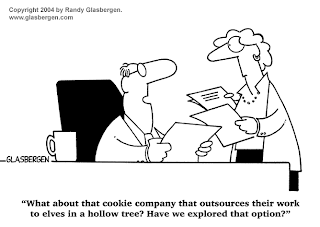
What emotion do your customers experience when they interact with your company? What impression do you or your employees, internal systems and products make on your customers and business partners? What is the essence of your company that will stand the test of time?
In my BLASTTM Marketing System, I spend a lot of time teaching entrepreneurs the importance of creating both a business and a personal brand to support their business. A brand is created using a variety of different marketing messages, images and touch points and goes far beyond your logo, websites and brochures. It is about emotion and thought. When customers hear your business name what comes to mind? What is the lasting impression? For example, when you think of FedEx, what comes to mind? How about "When you absolutely have to get it there overnight" and did the big plane they use on their commercials pop in your head? Or when you are talking with a client and you need to overnight something do you find yourself just automatically saying, "I'll FedEx that to you" as though FedEx is a verb?
How about Walt Disney? What comes to mind? What is the lasting impression? How about "Happiest place on earth" or the word Magic? Disney went out of his way to leave a lasting impression and to create a world of fantasy, happiness and imagination and everything about Disney, supported that impression. If I start singing "I am stuck on Band Aid Brand because……. Can you finish the phrase? Are you singing "Because Band Aid's stuck on me" Chances are you even are remembering a story perhaps in your childhood when you used Band Aid' product.
When companies have successfully connected with their customers and live and breathe every moment in support of that connection, is when they create a brand - an emotional element connected to your company, its people, its process and all of its points in between that support that emotional connection. So what are the points in between? Simply, anyway your company touches a client or potential client. It could be your people and their behaviors, your internal systems - technology, invoices, phone, website, etc. and your external systems - your product, how the product is delivered, your marketing and your customer service. When this connection happens, your customers become loyal to your brand.
To build equity in customer relationships develop a concrete brand strategy using one word - three simple letters: BID- Brand Promise, Identity and Deliver your Promise.
B - Brand Promise
Your brand promise should be compelling and unique. It must make a public statement that your product will perform the way the customer expects each and every time. It becomes reliable and creates and resonates emotionally with your target audience. It should be short and truly represent why you are different - "when it absolutely has to get there overnight"
I - Identity
Your identity defines who you are and more importantly why you are in business. You should focus defining yourself strategically rather than the functions you perform. Focus on your core values, core differentiators and the markets you serve. Know who you are with confidence and conviction and your customers will come to rely on that identity.
D - Deliver Your Promise
Your promise delivery will make or break your brand. As the old saying goes "practice what you preach". You promise should permeate your entire culture and everything that touches the client should support your brand promise and reinforce your brand identity. There are never any exceptions and the minute you make one, the minute you lose credibility and trust with your customer.
To build brand equity and customer loyalty, you must have a strong company identity that people can relate to and a public commitment or guarantee, that people can expect each and every time they engage your organization including your employees, internal and external systems and actual product or service delivery. By mastering BID, you will create a loyal relationship with your customers, similar to the Blindly Proud Grandparents from my last article "Master Strategy: Know Your Customer"
sources:
www.KellieDandrea.com
www.blastmarketing.blogspot.com










